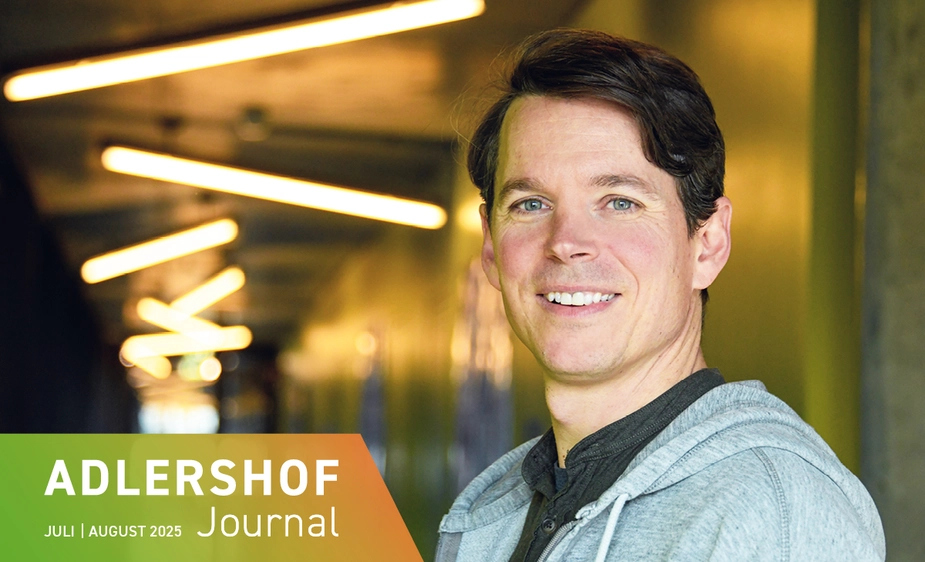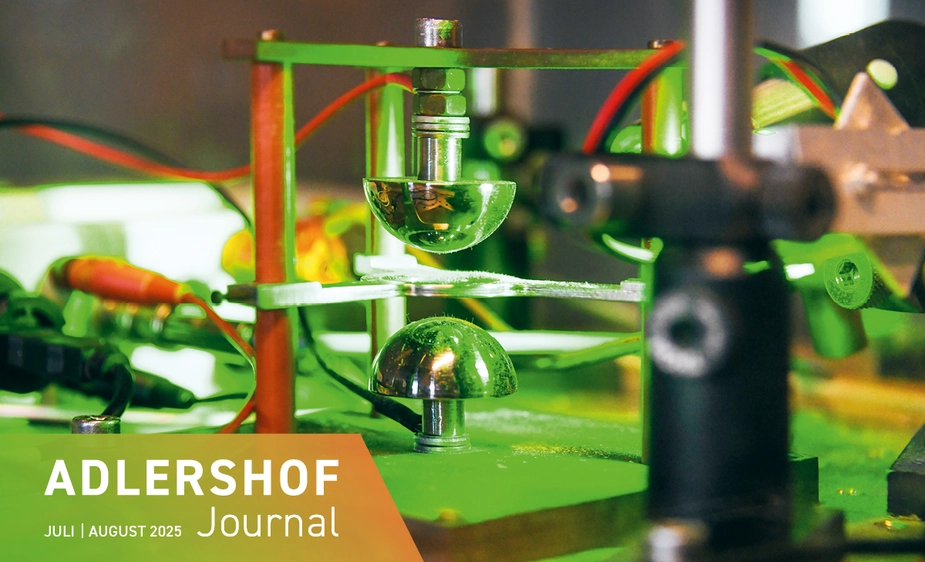How quantum particles communicate
Nanophysicist Günter Kewes brings complex physics to life during Berlin’s Long Night of the Sciences
We owe solar panels, smartphones, MRI scanners, and even supermarket barcode readers to quantum physics. For this reason, the UN General Assembly has declared 2025 the International Year of Quantum Science and Technology to mark its centenary. During this year’s Long Night of the Sciences, many researchers set out to bring the world of numbers and formulas closer to young people. At Humboldt-Universität zu Berlin (HU), nano-optics researcher Günter Kewes has spent over a decade inspiring young people through creative approaches to physics. This year, he showcased quantum communication. Last year, it was quantum jazz. Quantum jazz transforms random numbers into sound. To create these numbers, he used the true randomness found in quantum mechanics.
Specifically, he used the light particles, the so-called photons, that are emitted at unpredictable times during so-called quantum jumps. “When a photon hits a photodiode, it’s absorbed. We can measure these time intervals in microseconds or even smaller units. They’re then converted into machine language—strings of 1s and 0s. The computer takes these random numbers and assigns them to so-called MIDI instruments,” says Kewes. MIDI stands for musical instrument digital interface, which are devices controlling other devices that create sounds. Put simply, each random number is assigned a note or a moment in time when it should sound.
“To keep the tones from becoming too jarring, some notes are excluded through the software. What you hear are piano, drums and bass, but not necessarily melodies. The result can be quite unpredictable.” In physics, such unpredictable events are called quantum fluctuations—random energy changes that trigger quantum jumps. Their erratic nature reminded the team of jazz improvisation. “This is what I find so fascinating about the quantum world. This sense that something is constantly fluctuating in the background.” There are other ways to play around with that. “Instead of converting the information into sound, you could create a black-and-white noise pattern by translating 1s and 0s into light and dark, or shades of grey.” The possibilities here were endless, he says.
Kewe’s research focus is on nano-optics, where he works with conductive gold or silver nanostructures that can effectively “trap” light. “Metals contain free electrons that can convert light into plasmons, which are collective oscillations of these electrons. The better the conductivity, the lower the absorption losses.” One application of plasmonics, as the field is called, is rather old indeed: “When making church windows, small gold particles are mixed into the glass. When light hits them, these metal nanoparticles scatter different wavelengths of light to varying degrees. That’s how stained-glass windows get their vibrant colours.” Kewes’ role is to describe how the plasmons behave in these metal nanostructures and how they can be used to manipulate the light emitted by molecules or atoms, for example by enhancing its brightness. In a sense, the quantum fluctuations mentioned earlier are amplified by these nanostructures.
Technologically, one of the major challenges at the moment lies in building optical circuits, which are hitting physical limits due to diffraction. It was not possible, he says, to focus light into a space smaller than roughly half its wavelength. The result: “If I try to build something smaller, it can’t be too tight, otherwise the light starts coupling back and forth uncontrollably, and nothing works anymore.” Generally speaking, the great ambition of plasmonics is to be able to miniaturise everything connected to optics.
Kewes is a lifelong fan of the Back to the Future film trilogy from the 1980s. When writing the foreword to his doctoral thesis on fundamental elements of active nano-optics, he had an idea. “I tried not to write a dull foreword and started noticing parallels with the films. Incidentally, I submitted my thesis in the exact year that Marty McFly travels to in the sequel. And so, I started thinking about whether any of the futuristic inventions shown in the films had since come true.” Large flat-screen displays, which were unimaginable in the 1980s, now existed. This is another reason why Kewes is sure: If we can imagine it, it can become reality someday.
Susanne Gietl for Adlershof Journal

